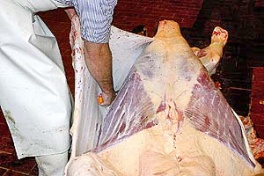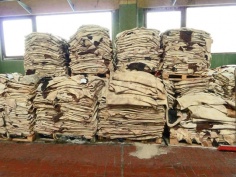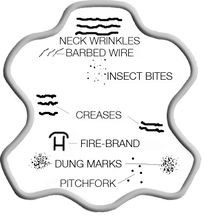Difference between revisions of "Rawhide dealers - Skin collectors"
m |
|||
| Line 17: | Line 17: | ||
Earlier local slaughterhouses and butchers slaughtered. Today, the meat industry is dominated by large farms. Due to the size of these farms and the greater demand for hides by the growing [[car leather|car industry]], rawhide dealers and agro companies are in a strong position. | Earlier local slaughterhouses and butchers slaughtered. Today, the meat industry is dominated by large farms. Due to the size of these farms and the greater demand for hides by the growing [[car leather|car industry]], rawhide dealers and agro companies are in a strong position. | ||
| − | Raw material prices are rising steadily, and the [[tannery|tanneries]] and [[Leather dealer|leather traders]] | + | Raw material prices are rising steadily, and the [[tannery|tanneries]] and [[Leather dealer|leather traders]] are constantly faced with the dilemma of whether to pass these increases in cost to their buyers. If prices rise too much, manufacturers can switch to substitution materials such as fabrics or [[Imitation leather|synthetic leather]]. |
The [[leather quality|quality of the hides]] is different depending on the bovine species, origin, sex, age, nutrition and type of livestock farming. Tanneries must strive with a great deal of effort to secure supplier sources, which deliver consistently [[leather quality|good quality]]. Leather with bad characteristics or many [[Natural markings on leather|skin damages]] can quickly ruin the calculation. | The [[leather quality|quality of the hides]] is different depending on the bovine species, origin, sex, age, nutrition and type of livestock farming. Tanneries must strive with a great deal of effort to secure supplier sources, which deliver consistently [[leather quality|good quality]]. Leather with bad characteristics or many [[Natural markings on leather|skin damages]] can quickly ruin the calculation. | ||
Revision as of 13:43, 6 December 2016
Rawhide dealers - Skin collectors
A slaughterhouse slaughters everything. Animals of every kind and age. Therefore rawhides in the slaughterhouse vary. Tanneries specialize in certain types of leather. Slaughterhouses and tanneries also have different capacities.
After the slaughterhouse, the skins do not go directly to the tannery. Rawhide dealers or skin collectors buy the hides, sort them by species, sex (the car industry uses exclusively bull skins) and weight (affects the size of the skin). The rawhide dealer cuts the edges of the rawhide skins and preserves them.
Earlier local slaughterhouses and butchers slaughtered. Today, the meat industry is dominated by large farms. Due to the size of these farms and the greater demand for hides by the growing car industry, rawhide dealers and agro companies are in a strong position.
Raw material prices are rising steadily, and the tanneries and leather traders are constantly faced with the dilemma of whether to pass these increases in cost to their buyers. If prices rise too much, manufacturers can switch to substitution materials such as fabrics or synthetic leather.
The quality of the hides is different depending on the bovine species, origin, sex, age, nutrition and type of livestock farming. Tanneries must strive with a great deal of effort to secure supplier sources, which deliver consistently good quality. Leather with bad characteristics or many skin damages can quickly ruin the calculation.
The unfulfillable desire of every tannery are Rawhides without natural markings.
Additional information












 a kotori web solution
a kotori web solution